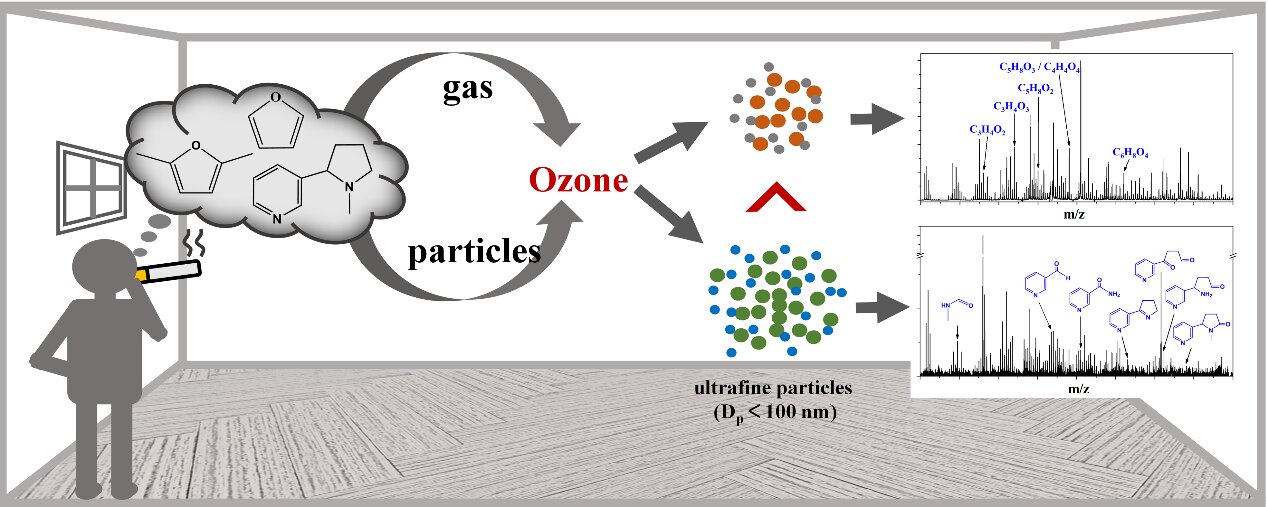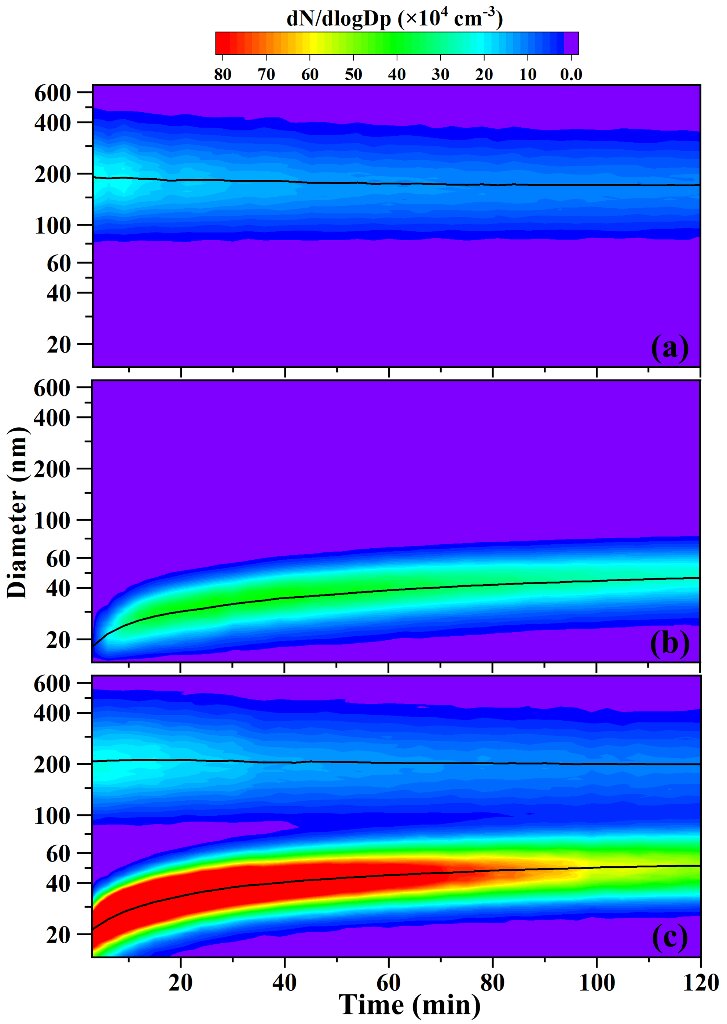The results were published in Atmospheric Environment.
Cigarette smoke aerosols and ozone are two important pollutants in the indoor environment, and the interaction between them will further produce ultrafine particles (UFPs) with a size of less than 100 nm, which will have a synergistic effect on indoor air quality and human health. Due to their smaller size, UFPs have significant impacts on human health because they can provide a higher surface area to absorb further potential toxic chemicals or pathogens and interface with pulmonary surfaces, attracting increasing attention in the past decades.
In this study, researchers separated the gas-phase and particle-phase of cigarette smoke aerosol through different filters, simulated the indoor ozonolysis process of the gas- and particle-phase of cigarette smoke using a Teflon reaction chamber, and monitored the particle size distribution and chemical composition of the smoke aerosol during the aging process.
The results showed that both the gas and particle phases of cigarette smoke can form UFPs when exposed to indoor ozone levels, while the reaction of the particle phase with ozone produces more UFPs than the reaction of the gas phase.
In addition, they carried out ozonolysis nucleation on several representative key species of cigarette smoke react with ozone, including gas-phase furan and 2,5-DMF, and the particle-phase nicotine, which further revealed the aging mechanism of cigarette smoke aerosol.
This research provided theoretical basis for cigarette smoke exposure risk assessment, according to the team.

Figure 1. Graphical abstract (Image by MA Lan)

Figure 2. Particle size distribution and number concentration of cigarette smoke aerosol during the aging process (Image by MA Lan)

